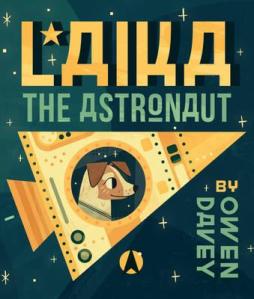While reshelving book the other day, I overheard one girl question the necessity of picture books in a high school library (I am a library aide at a secondary college). ‘We are in high school,’ she exclaimed. ‘Surely we are too old for picture books!(or something to that effect)’. One of the librarians calmly explained that we keep a collection of pictures book for our ESL and learning support students, and for a unit of English where students explore picture books.
Picture books provide other curriculum benefits as well. Susan M. Landt in her article about using picture books in Geography points out that picture books are a great way to engage student and to introduce certain topics and subjects. She goes on to say that picture books are often thought of as being redundant after students are advanced enough to read novels. Trevor Cairney believes this tendency to see picture books as childish ignores the complex themes and literacy and visual devices that authors and illustrators use. He promotes the continued use of picture books as supporting literacy and creativity;
‘Picture books are important for children ages 0-12 years, so don’t neglect them or disregard them in a perhaps well-intentioned, but misguided desire to improve your children as readers. Remember books are foundational to language writing, knowledge, thinking and creativity as well. They represent one of the best ways to offer children multimodal experiences with text’– Trevor Cairney
I would go further than this. I think that picture books have merit for all ages, not just those aged 0-12, and not just for those who are studying writing or language. As an artform, picture books often give an insight into an aspect of the human condition, history, or natural history which can be forgotten or overlooked in the adult world. Picture book illustrators and authors have a fantastic ability to refine stories into a form that is clean and relatable. Combining this form of storytelling with illustrations provides an extra level of meaning.
I think it would be fair at this stage to point out that I have a background in the visual arts, and have a passion for illustration of all kinds. I will freely admit to spending more time looking at the illustrations than I do reading the text. But is this necessarily a bad thing? Children’s book illustrators (the accomplished ones, not the Disney spin-offs. My intense dislike of Disney picture books is a whole other post!) are often overlooked as artist, and while their subjects and style can be a bit cutesy at times, their skill and imagination is awe inspiring. Here are some titles that I am loving at the moment:
‘Peggy’ (Anna Walker, Scholastic)
Peggy is a story about an adventurous chicken who strays into the city and has a day of fun and new discoveries, but is glad to finally find her way home. The illustrations are soft watercolours embellished with graphite, coloured pencil and collage. The pages alternate between full page illustrations, storyboard like grids and small drawings on almost blank pages. This style of layout gives the book visual variety and combined with a repetition of graphite lines, gives a sense of movement to Peggy’s journey.
‘Octopuppy’ (Martin McKenna, Omnibus Books)
Octopuppy (not to be confused with Octomom!) tells the story of Edgar, who really wants a puppy, but ends up with Jarvis the octopus. Jarvis refuses to act like a dog, despite being entered into a dog show, and embarasses Edgar, by juggling, playing the piano and ballet dancing in front of the judges and other contestants. The illustrations in Octopuppy are digitally produced and consequently are more polished than the hand drawn illustrations in ‘Peggy.’ However, McKenna’s attention to detail really makes the story of Jarvis and Edgar come alive and the fanciful end pages showing Jarvis in a variety of costumes is endearing.
‘Laika, the astronaut’ (Owen Davey, Allen and Unwin)
If you have a soft spot for dogs, this book may bring a few tears to your eyes. It is the true story of Laika (pronounced like+a) the stray dog who is recruited into the Soviet space program and lost in space on her first mission. There is a beautiful, heartwarming twist at the end which I won’t spoil. The illustrations stick to a muted palette, but this choice suits the retro style of the illustrations perfectly.
‘The Rules of Summer’ (Shaun Tan, Lothian)
I have had a bit of an art crush on Shaun Tan for a while now, all thanks to this book, which I initially didn’t like much at all. While I enjoyed his quirky and beautifully rendered illustrations, I found the storyline annoyingly unfathomable. But, after reading it a few times, I decided that it was a story of a little boy who makes mistakes, pride, apology and forgiveness set in a bizarre and colourful world.
We all have fond memories of picture books from our childhood. Being read to by a parent or grandparent, or endlessly pouring over a favorite. Why does this have to stop in adulthood? Next time you are in a book shop, why not buy a picture book all for yourself? I say be selfish! don’t give it to the kids, keep it as a special gift to your imagination and sense of joy!



